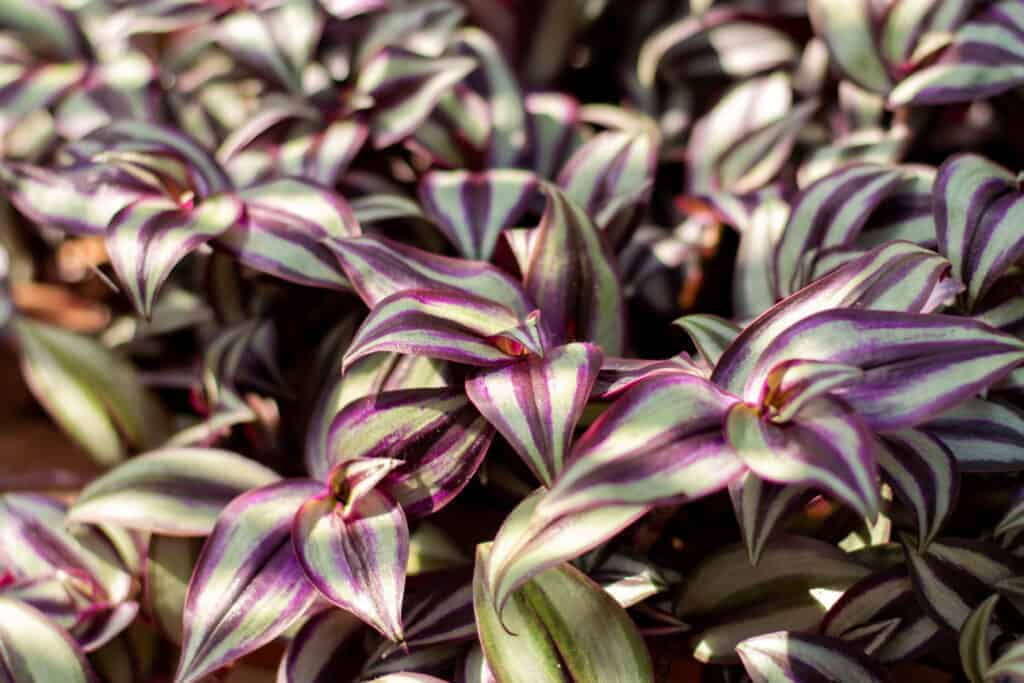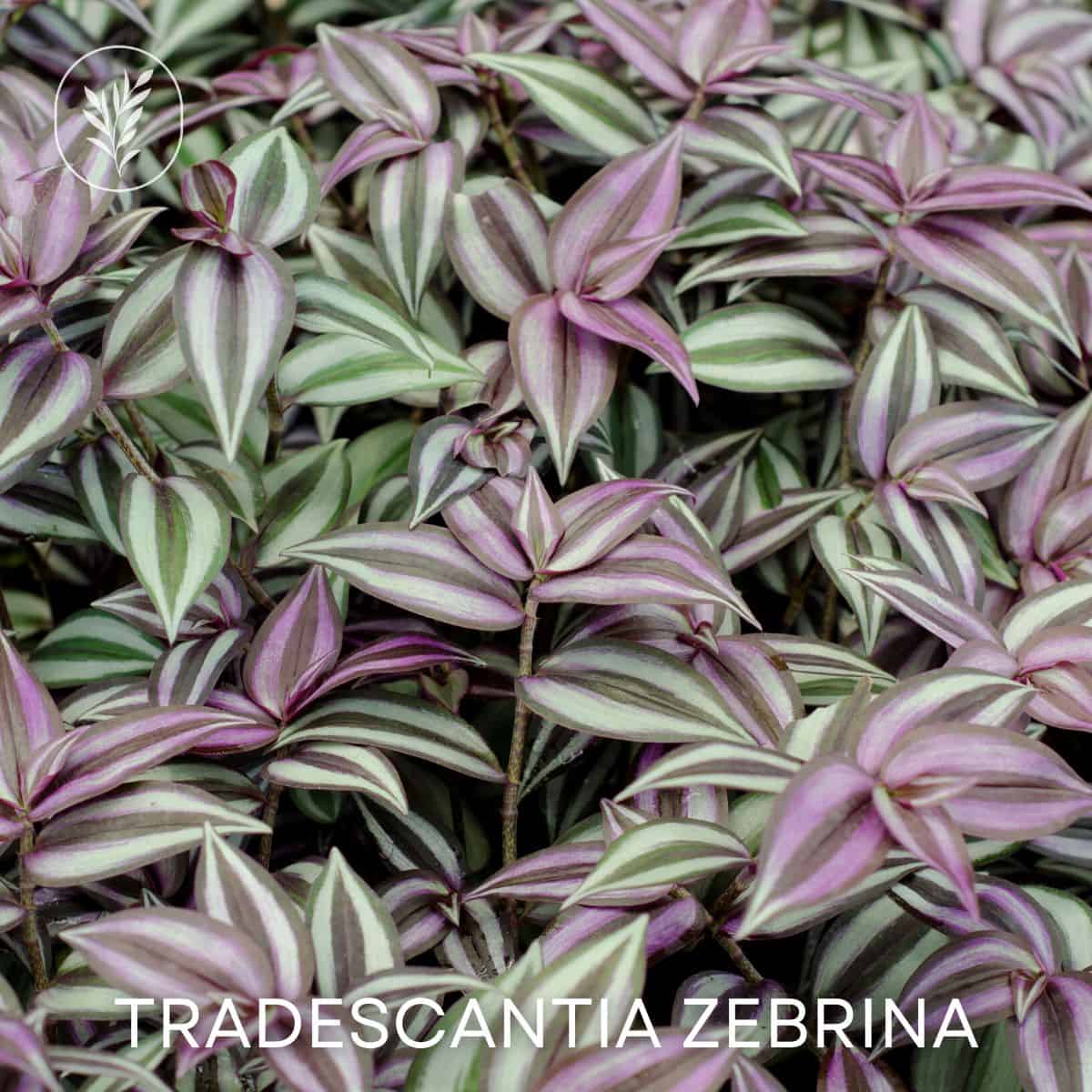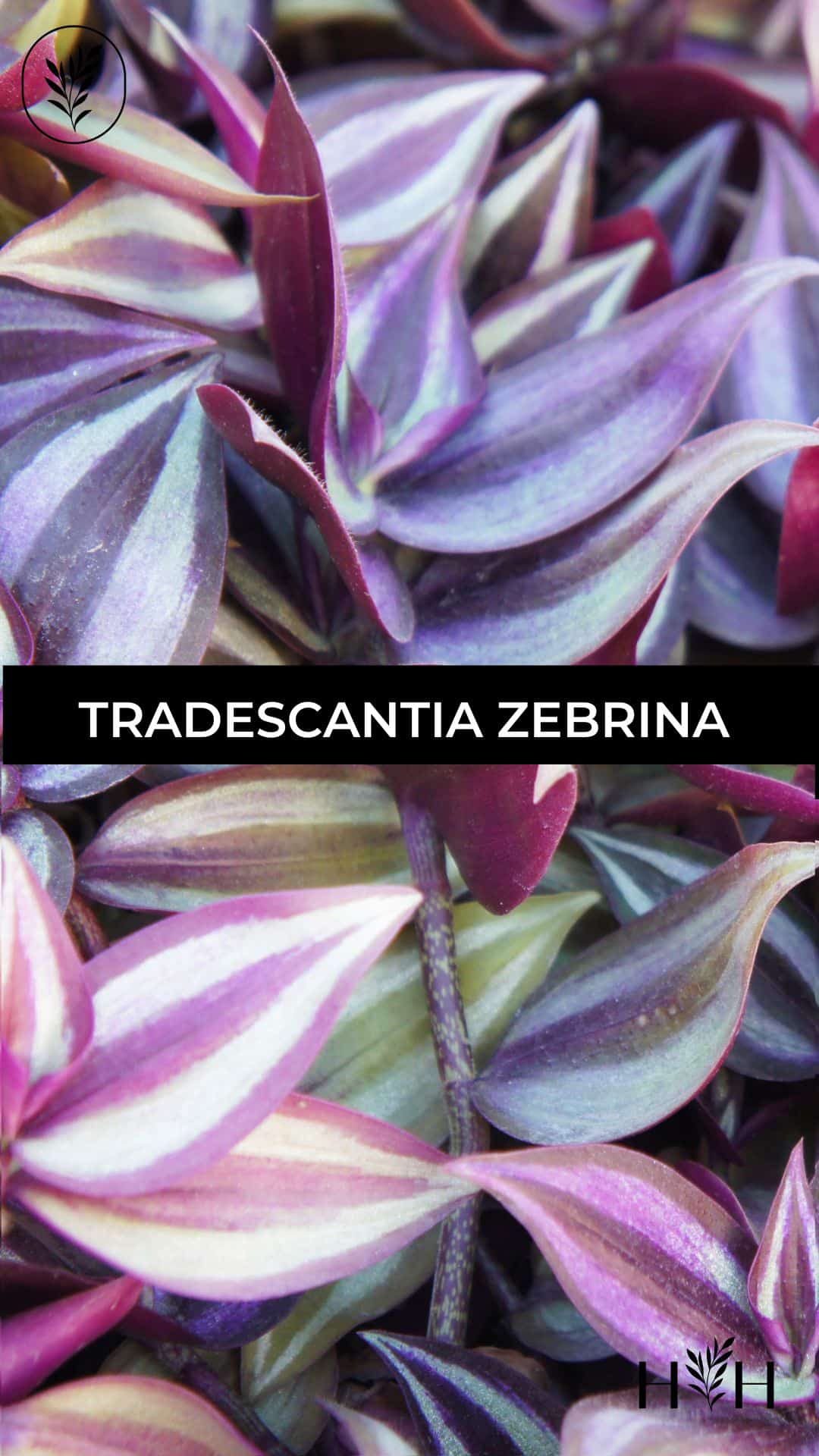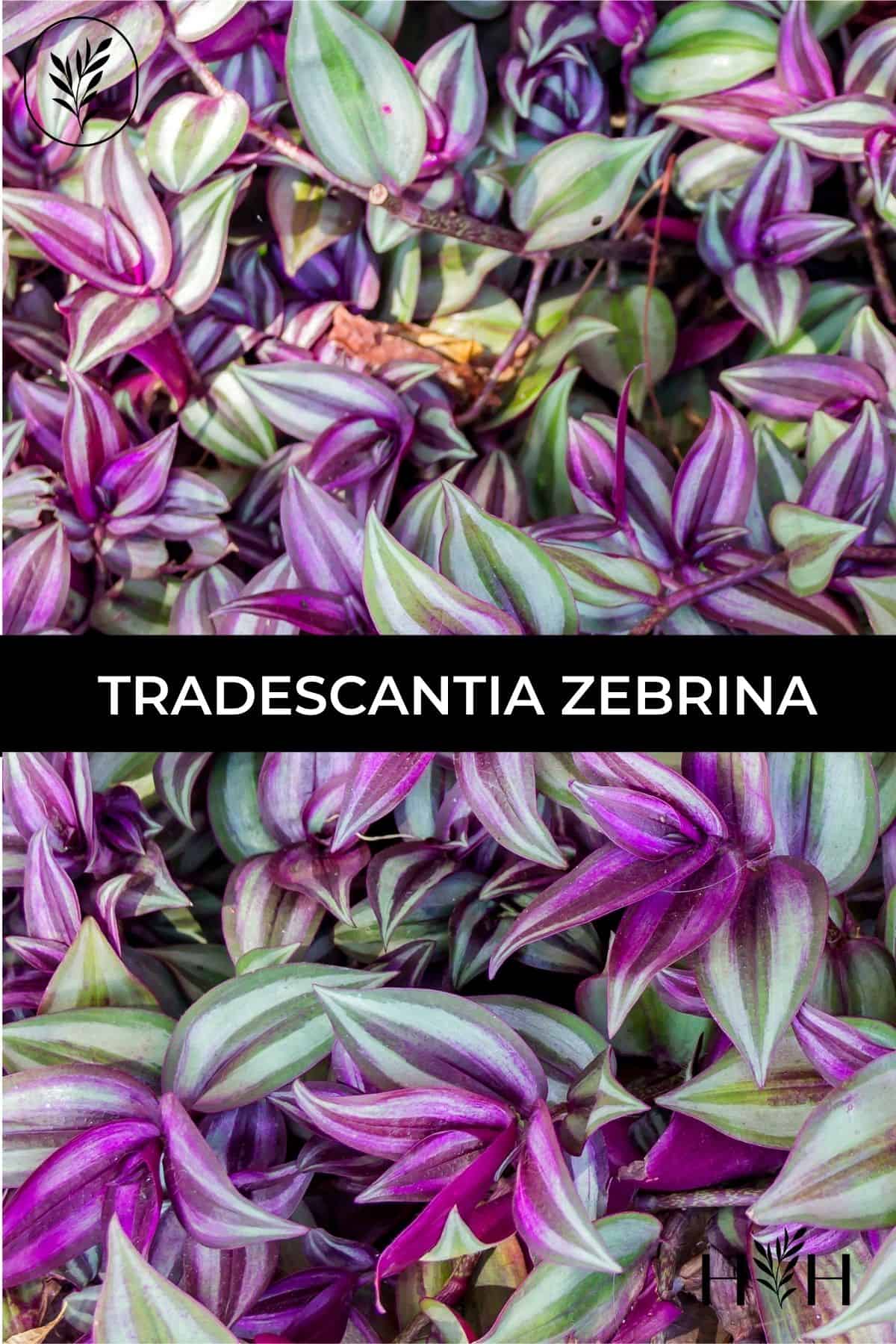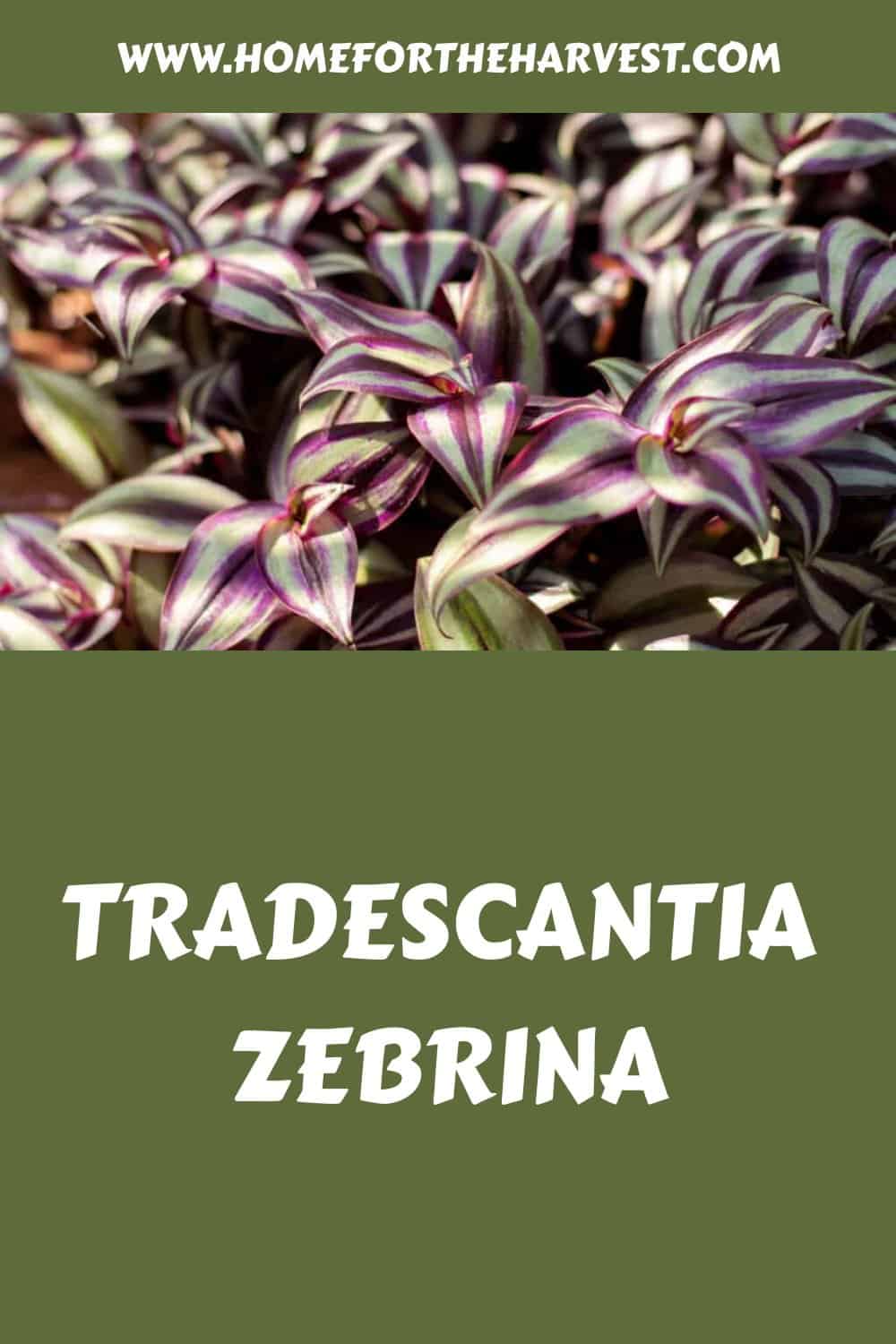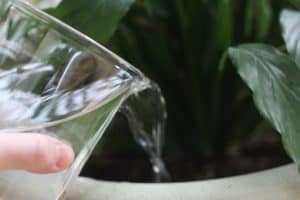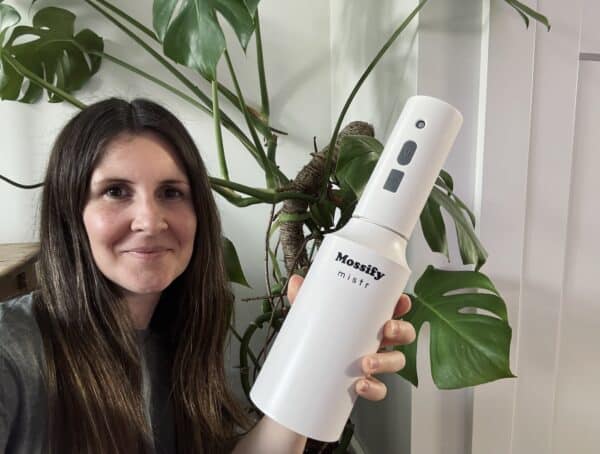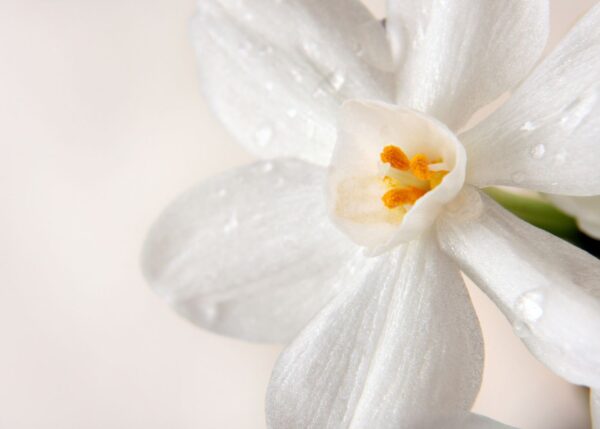Tradescantia zebrina is a low-growing tropical plant commonly grown as a houseplant or warm-climate groundcover. The Tradescantia zebrina, also called Striped Inch Plant, is prized for its purple-green striped leaves and ease of cultivation in the garden. Tradescantia zebrina is one of the most popular Inch Plants to grow either in your garden or indoors as a feature houseplant.
Tradescantia Zebrina basics
Tradescantia zebrina is a herbaceous perennial succulent plant that tends to grow in dense mats over moist soil surfaces. Tradescantia Zebrina is native to the wetland and moist jungle-type tropical areas in Mexico, Central America, Colombia, and both the Caribbean and Galapagos Islands.
The Striped Inch Plant (Tradescantia zebrina) was formerly known as the Zebrina Pendula. It is now classified as a Tradescantia. This plant is known for its striped green/purple leaves with its famous silver, shiny stripes. And, just like most other houseplants, the key to growing a Striped Inch Plant is plenty of water, sun, and high-quality soil.
The Striped Inch Plant is primarily made up of leaves with a few small flowers. The leaves themselves vary in shades of green, green-blue, purple, and magenta. All these leaves sport silver stripes (usually two of these stripes on each leaf), with the colors acting as a border for the bands of silver.
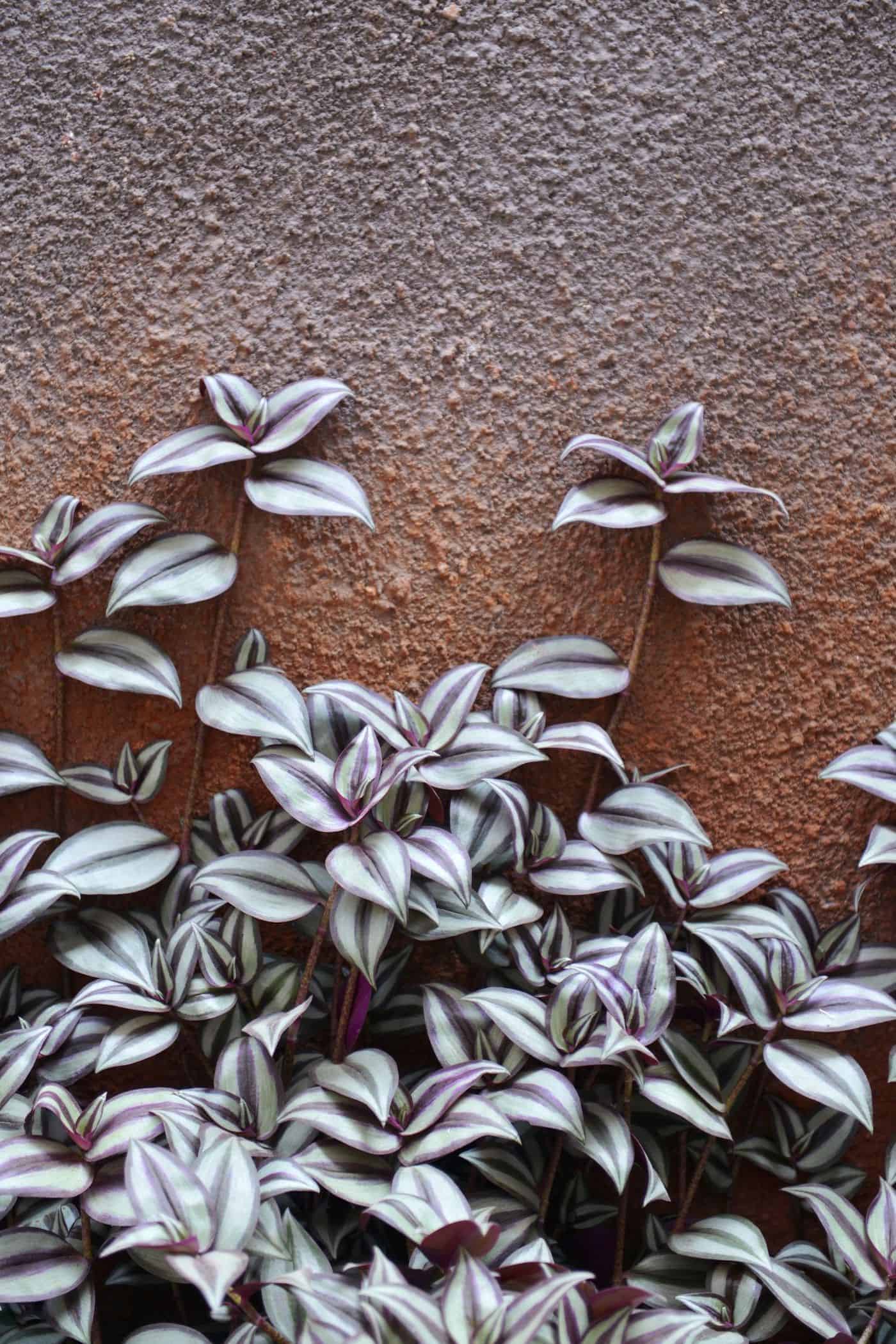
How to care for Tradescantia Zebrina
Because of its sensitivity to light and its need for warmer temperatures, the Tradescantia Zebrina is perfect for growing indoors! Whether it’s hanging from a basket or sitting in a pot on the ground, the Tradescantia Zebrina is a happy camper.
Watering Tradescantia zebrina
Tradescantia zebrina plants need plenty of water. This plant doesn’t like to be kept dehydrated. Make sure to water your Striped Inch Plant deeply, ensuring that the plant will have enough water for the day, while still avoiding drowning it in too much water. Balance is key for this plant. Also be sure to water your Tradescantia Zebrina less during the winter months, as they don’t need as many liquids during a cooler, restful period.
Fertilizing Striped Inch plants
Striped Tradescantia plants grown in containers require feeding with plant fertilizer as they are isolated from their natural ecosystem. Use an indoor plant food formulated for tropical plants if possible.
Light requirements for Tradescantia zebrina
Though this plant, like many other foliage plants, likes its time in the sun, the Tradescantia Zebrina doesn’t like to be dried out by overly hot conditions. Placing the plant inside near some indirect sunshine (where it will get the occasional shade), can help keep your Striped Inch Plant healthy.
Temperature requirements for Tradescantia zebrina
Also, keep in mind that the ideal temperatures for this plant are between 55 and 75 degrees Fahrenheit. So if it gets any hotter or any colder than where you live, you might want to adjust the AC or keep a special eye out for signs of plant distress. That said, these plants are quite hardy and tolerant of temperature fluctuations.
Potting soil for Tradescantia Zebrina
Keeping in the vein of balance, Tradescantia Zebrina loves neutral soil. Because they don’t want anything too acidic, or too basic, these plants grow best in neutral soil. Just a nice tropical plant potting soil is perfect for inchplant.
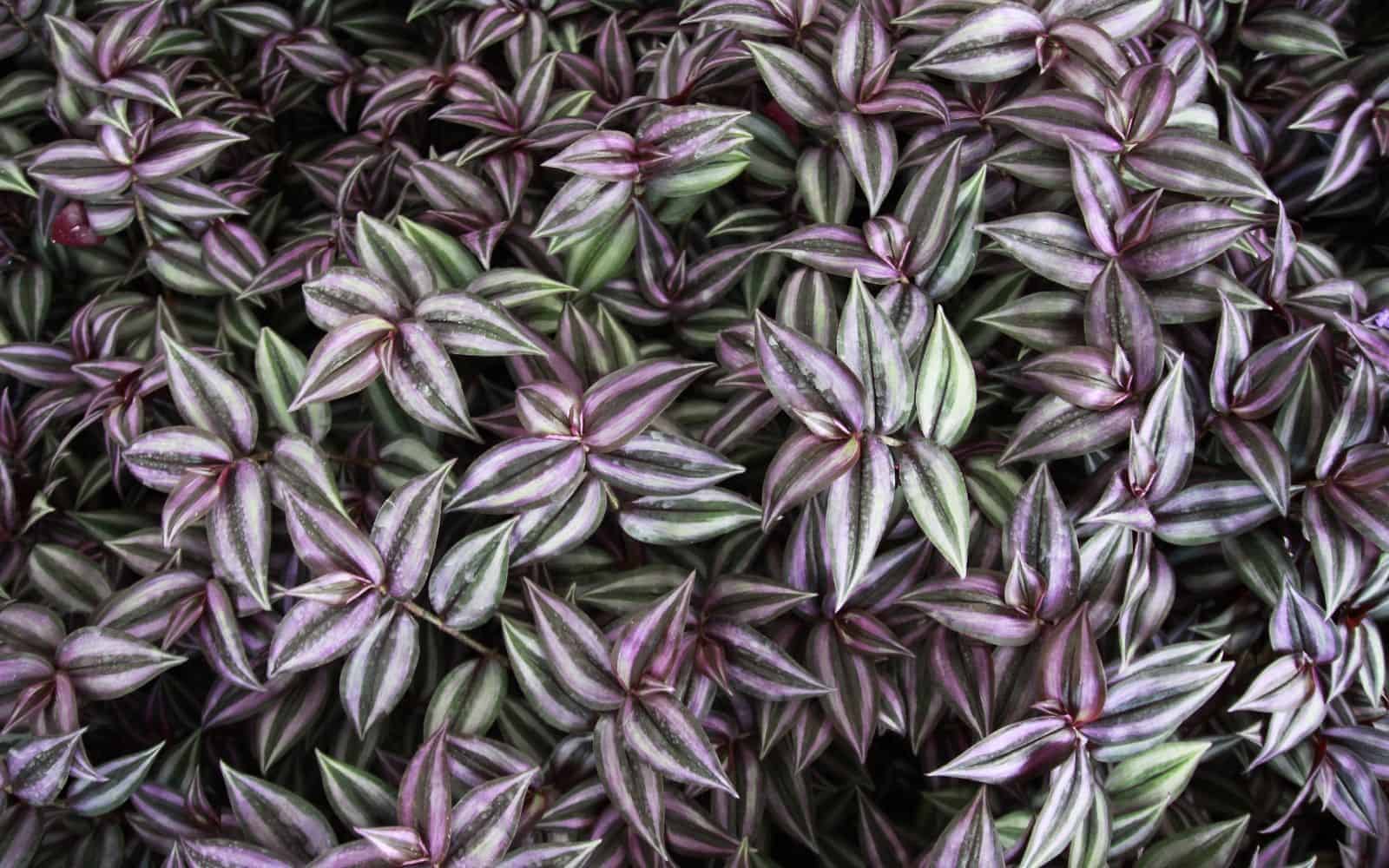
Tradescantia Zebrina propagation
Tradescantia zebrina is most commonly propagated by cuttings.
A parent plant (the original plant you start off with) gets a piece of its vegetation removed or “cut off” from the parent stem. This severed part of the plant (about 3-4 inches long) is then transferred to water in order to regenerate roots of its own. This can take up to seven days. A week after these roots show, this new plant is put into a pot to grow further. Now you have a whole new plant!
Be sure to use a sharp blade when cutting, as this does the least amount of damage to the parent plant.
Once you get familiar with rooting your Tradescantia zebrina cuttings in water, you can try simply popping the fresh cutting right into moist potting soil. These plants propagate very easily and often “take” within a week or two simply by pushing fresh cuttings into the moist potting mix.
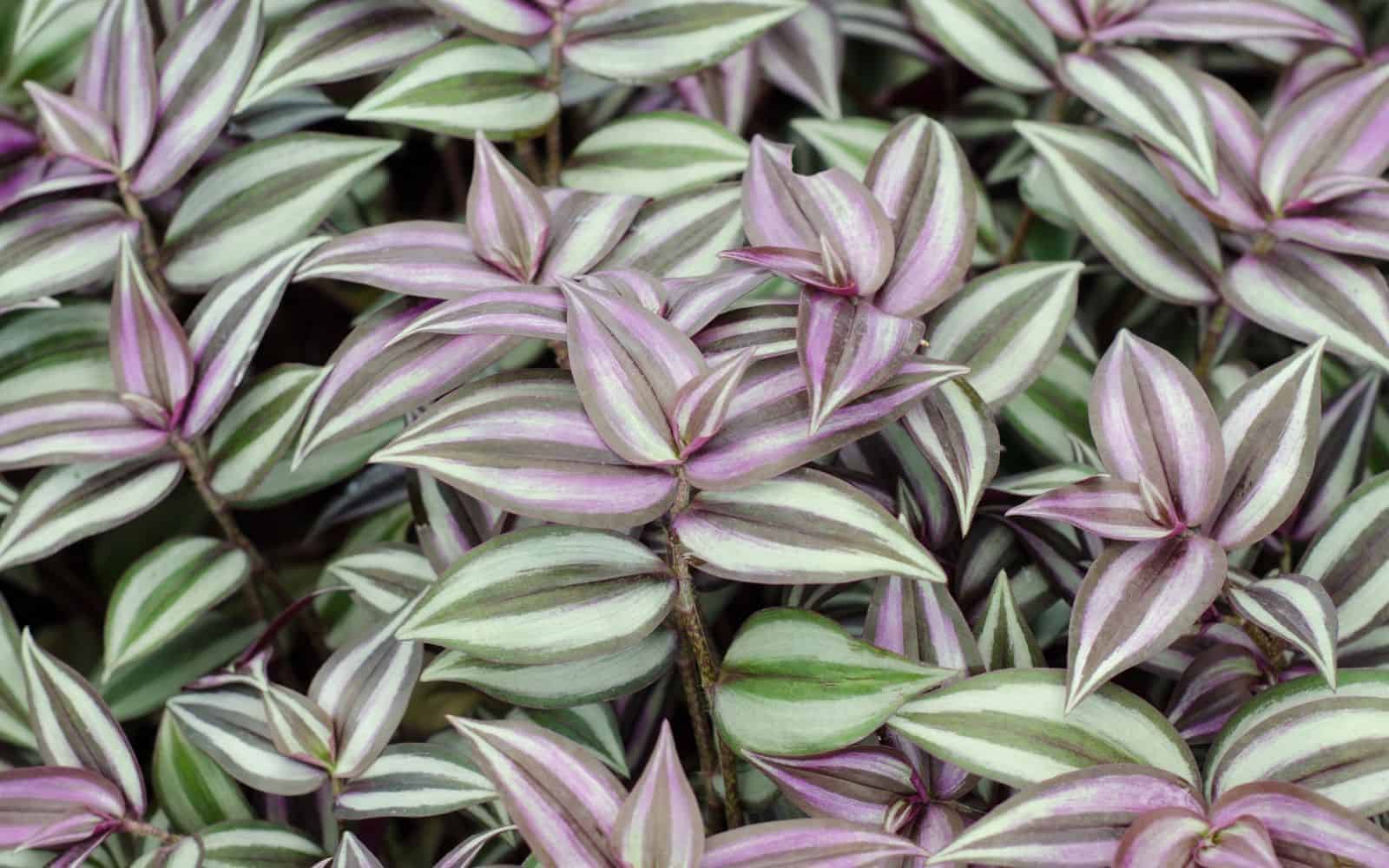
Problems growing Tradescantia Zebrina
The striped inch plant has so many rewards, from its dazzling array of colored leaves to its ability to regenerate easily, but that doesn’t mean there aren’t things to look out for.
Tradescantia Zebrina can become invasive if grown outdoors in warm climates where it can survive the coldest days of winter. Striped Inch Plants, though beautiful and plentiful, tend to be a little too plentiful at times. Known as an invasive species (a plant that grows so rapidly, that the rate of development is faster than the rate of upkeep), the Striped Inch can get a little carried away.
In terms of pest insects, there are several culprits which affect Tradescantia Zebrina. Though there’s no real threat of a serious infestation, here are a few common pests:
- Aphids
- Mealybugs
- Scale
- Whiteflies
- Spider mites
- Fungus gnats
- Shoreflies
Aphids are the most commonly seen pest on Tradescantia Zebrina. One of the easiest ways to rid yourself of aphids is to take the plant outside and spray them off with a sharp stream of water. Do this every day until the population is significantly reduced. Then treat the whole plant with an organic insecticide.
Other types of Tradescantia (inch plant)
Tradescantia Zebrina is just one of the many types of Tradescantia plants. There are many other Inch Plants to grow! So if you’re looking for more varieties, this plant has many brothers and sisters including:
- Tradescantia Fluminensis (the Green Inch Plant)
- Tradescantia Pallida (the Purple Heart Plant)


